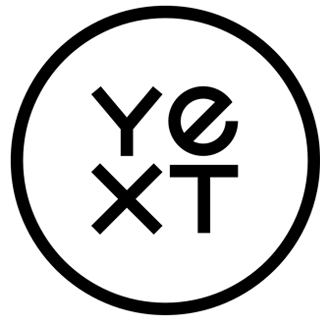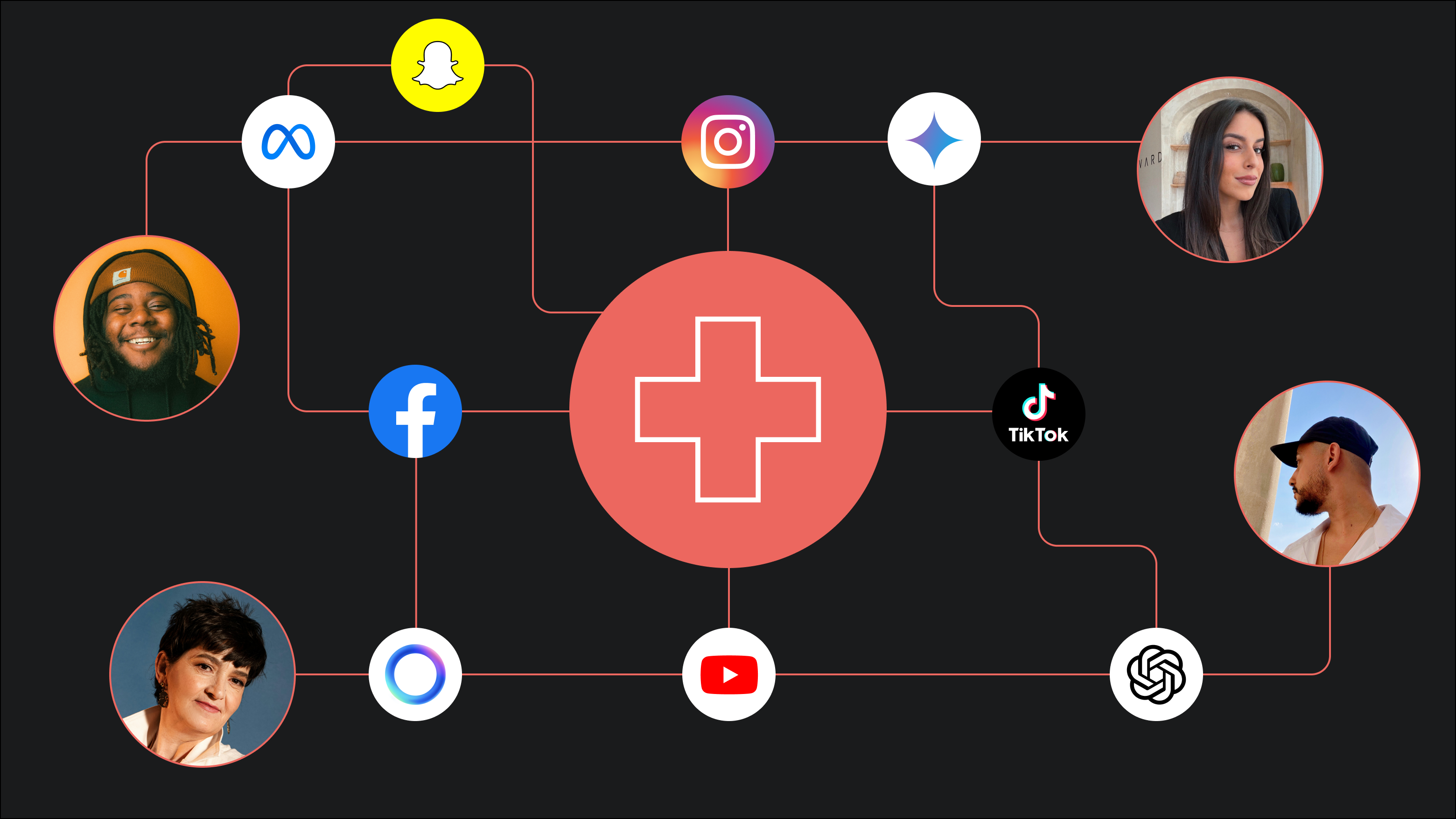5 Reasons Top Healthcare Orgs Are Using Social Media to Drive Growth
Learn how healthcare and insurance marketers use social media as a low-cost, high-impact growth engine that improves AI visibility and boosts patient and member trust.

Yext
Jun 25, 2025

Patients and members don’t just Google—they scroll, search, and crowdsource care decisions on social media. And AI search tools are listening.
For healthcare marketers, social media is no longer a “nice to have”—it’s a powerful, ROI-driven growth engine. This post explains how centralized, compliance-ready social strategies can help healthcare organizations boost visibility, build trust, and convert engagement into real patient and member outcomes.
In healthcare, trust is everything
As marketing leaders, we’re used to thinking about using social media as a brand awareness play. But today? It’s pivotal for growth and connection.
Patients are searching for care on social media.
People want to know they’re in capable, compassionate hands. And in 2025, establishing trust often starts on social media.
Gen X, Millennials, and Gen Z make up roughly 67–70% of the U.S. adult population, but based on trends, they account for an estimated 80–85% of people starting their search for healthcare on social media. These patients are on platforms like Instagram, TikTok, and Facebook, searching for providers, crowdsourcing opinions on insurers, and evaluating care options.
Millennials (age 29-40 in 2025) are particularly important to connect with because many of them are now heads of household, making care decisions for children, spouses, and, in some cases, aging parents. Among them, 31% report a higher satisfaction rate among practices with active social media.
And it’s not just patients you need to connect with. AI search tools analyze social media to look for signals of credibility and relevance.
There’s mounting evidence that the consistency, frequency, and recency of your publishing, combined with how often you’re mentioned by users, has an impact on how often you surface in AI overviews and featured snippets.
If you’re still thinking about social media marketing as a nice-to-have, here are five compelling reasons it’s time to re-think your strategy.
1. Social media drives patient and member acquisition
Social isn’t just about likes and shares — it’s a lead engine. When your physicians, care teams, and locations post regularly, they build visibility and trust in their communities.
Healthcare organizations use social media to:
- Promote services
- Educate patients
- Elevate thought leaders
- Share success stories and testimonials
Social media can play a powerful role across all types of healthcare organizations — from large systems to smaller practices. In fact, a recent Yext survey found that 64% of consumers trust healthcare brands more when they have an active social presence.
That visibility can translate into real-world outcomes: elevated confidence, which leads to more appointments, more referrals, and stronger patient loyalty. As a bonus, it can also help your recruitment efforts.
Examples of how different organizations use social media:
- Health insurance carriers help brokers reach more patients, build trust with members, highlight provider networks, and simplify access to coverage.
- Physician’s offices share expert-led posts to build trust with local patients and keep patients engaged by providing updates on services and events.
- Hospitals and health systems allow individual facilities to post local content while maintaining brand control and share educational content to reduce call volume and improve patient satisfaction.
- Health and personal care retailers let independent locations promote in-store services (i.e., flu shots, health screenings) to drive foot traffic while maintaining corporate brand control.
Strategies and goals may vary, but it all comes down to building connections.
2. Social media can be a compliance-friendly channel
In regulated industries like healthcare, compliance is non-negotiable. But authenticity is still possible.
Yext Social is a purpose-built tool, designed to support brands operating in industries that face high regulatory scrutiny, which helps you reduce risk while allowing your team to meaningfully engage with patients.
Features like automated reviews scan for regulatory and brand issues across written, audio, and video content, while pre-approved content libraries, centralized oversight, and audit trails take the complexity out of compliance reporting.
3. Social media signals boost your AI search visibility
Brand visibility isn’t just about being online anymore; it’s about showing up everywhere patients are looking. And AI search tools like ChatGPT and Google Gemini are changing how patients find information.
That means having an active social media presence helps you appear in AI-generated responses.
With Yext Social, both corporate and personal profiles can be managed from one central dashboard, which provides platform-specific profile improvements and allows you to make scalable updates to important business information (address, phone, list of specialties). Optimized social profiles boost brand trust, giving you the best shot of AI surfacing your most up-to-date content and business information.
4. Social media fosters stronger patient relationships
Patients want to connect with real people, not faceless organizations. When your care teams share insights, celebrate milestones, or simply engage with their communities, they humanize your brand. But it’s not all about posting.
Social reciprocity — responding quickly to comments and reviews — shows patients you care. That kind of genuine engagement builds trust and boosts loyalty.
Above all, authentic engagement builds trust, which is the foundation of patient loyalty. And loyal patients are more likely to recommend your services to others.
5. Social media is a scalable marketing tool with measurable ROI
Centralizing your social media marketing allows you to efficiently manage content across multiple locations and teams. You can track engagement, monitor compliance, respond to comments, and measure the impact of your efforts—all in one place. We can also help you quantify and measure how your social program is impacting your bottom line.
Yext Social’s enterprise-grade platform scales to meet your needs, whether you're responsible for a single physician profile or are rolling out social to 10,000 locations. No matter your organizational structure, centralized calendars, AI-generated post suggestions, and actionable dashboards let you grow your reach without doubling your workload.
Social media is no longer optional in healthcare marketing
Patients are on social media looking for care — and AI is paying attention to your social presence. Investing in a strategic, compliant, social media marketing program positions your organization to meet patients (and AI search) where they are — online, engaged, and looking for care they can trust.
Ready to elevate (and simplify) your social media marketing? Learn more about Yext Social.